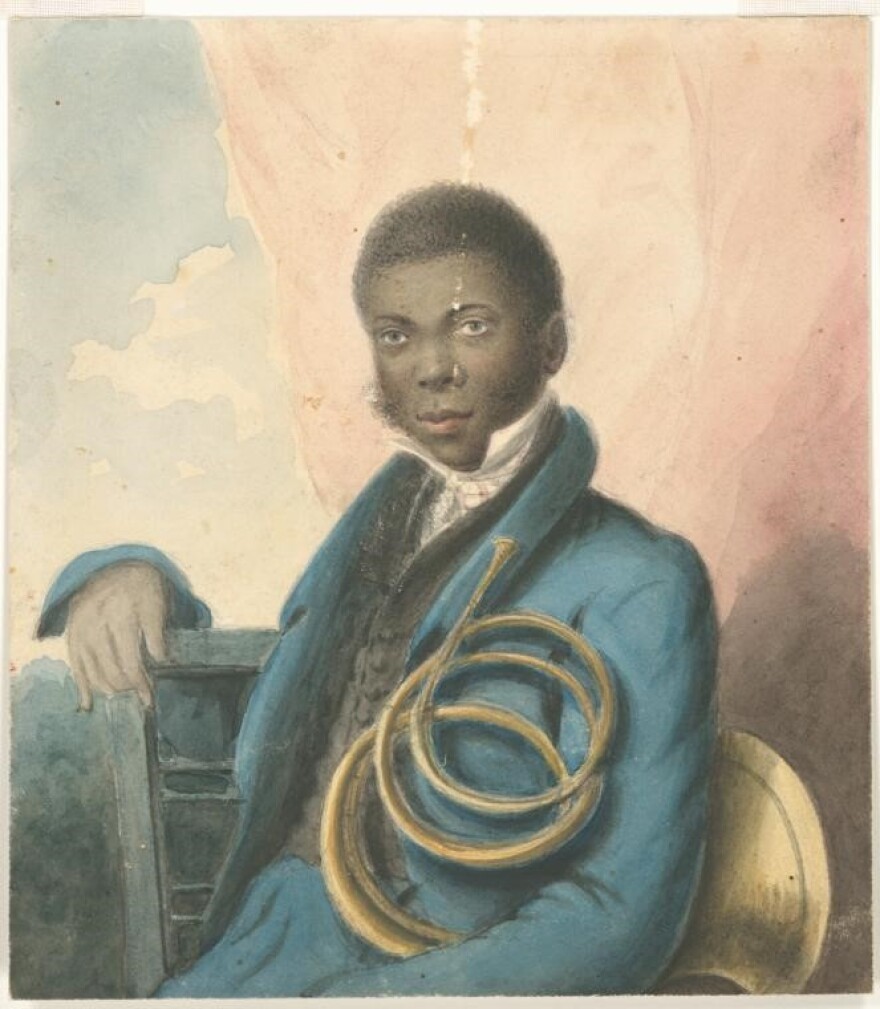Black history on the Niagara Frontier is long, rich and varied, a story that stretches from Joe Hodge, the trapper and trader who lived on Cattaraugus Creek and Buffalo Creek in the 1790s, to the Coloured Corps, the company of black soldiers who defended Upper Canada against the American invaders in the War of 1812, to William Wells Brown and the black Buffalonians who fought off Southern slavecatchers and the Erie County sheriff to keep a family of escaped slaves free. And that only takes us up to 1834.
But there’s another, lesser known chapter of the region’s early black history, a musical chapter that can still be heard today in the piano figure that marks the end of every Niagara Frontier Heritage Moment on WBFO.
Part of a 1839 composition titled “Buffalo City Guards Parade March,” it was written by Francis Johnson – the first African-American composer to have his works published as sheet music.
Johnson, a Philadelphian born in Martinique, was a wildly popular composer, musician and bandleader from 1818 until his death in 1844. He and his band of black musicians performed across much of the United States and were so admired that they were brought to London to play in celebrations marking the coronation of Queen Victoria. Johnson played the violin and the Kent bugle; composed more than 200 published works; and both performed with, and taught, white musicians regularly.
It was Johnson’s custom to write a special composition for many of the cities he and his brass band visited on tour. “Buffalo City Guards Parade March” was one such piece, written in 1839.* (It was named in honor of the special militia brigade formed two years earlier to safeguard Buffalo during the Upper Canada Rebellion.)
The piece was so popular that the Buffalo City Guards accompanied Johnson and his band by steamboat to the next stop, Detroit. There, according to one contemporary account, a crowd gathered at the docks, where the City Guards, dressed in full uniform, marched off the boat playing “Yankee Doodle.” Then Johnson’s band played “General Scott’s Keyed Bugle Slow March,” written in honor of Buffalo’s War of 1812 hero General Winfield Scott, and themselves marched ashore “with thrilling and powerful combinations blaring forth.” Johnson’s brass band and the City Guards repeated the performance in Cleveland and Toronto.**
Johnson’s tours stopped in Buffalo three times over the course of his career. His special affection for Buffalo audiences led him to write another piece, a brass band quick step “respectfully dedicated to the citizens by F. Johnson.” It was titled “Recollections of Buffalo.” An excerpt, performed by the Chestnut Brass Company, can be heard here.
Johnson and his band were the target of a number of ugly racial incidents during their travels, especially in the 1840s. Nevertheless, his remarkable career as a hugely popular formal musician and composer defied the expectations of what a black man could achieve in early 19th-century America. Somehow, against all odds, he succeeded – and Buffalo was blessed to have served as one inspiration for his genius.
*The piano figure from “Buffalo City Guards Parade March” that concludes each Niagara Frontier Heritage Moment is played by the pianist and composer Aaron Dai.
**For a biography of Johnson that includes details of his association with Buffalo, see “Francis Johnson (1792-1844): Chronicle of a Black Musician in Early Nineteenth-Century Philadelphia,” by Charles K. Jones.

